 English
English 
more 

 English
English 
Views: 0 Author: Site Editor Publish Time: 2025-07-15 Origin: Site







Introduction
Under boundary and mixed lubrication regimes, anti‑wear additives in oils form protective films to prevent metal‑to‑metal contact. Changsha Friend’s Lubricant Anti‑Wear Performance Tester quantifies a lubricant’s protective capability through standardized sliding or rolling contact tests, delivering key metrics for formulation and quality control.
Testing Principle
Two common configurations are available:
Four‑Ball Test: Three stationary balls hold a rotating fourth ball under a specified load (up to 196 N) at 75 °C. The test runs for 60 minutes at 1,200 rpm, then measures the wear scar diameter on the stationary balls.
Pin‑on‑Disk Test: A stationary pin contacts a rotating disk under a set load (up to 100 N), at controlled speed and temperature, and records friction torque. Wear volume is determined from post‑test profilometry of the scar.
Technical Features
Load and Speed Control: Servo‑driven actuators maintain consistent test parameters with ±1 % accuracy.
Temperature Chamber: Encloses the test area for uniform heating up to 200 °C.
Torque Sensor: Captures friction data in real time for analysis of boundary friction characteristics.
Modular Fixtures: Quick‑change adapters for four‑ball and pin‑on‑disk modules without recalibration.
Industry Applications
Transmission Fluids: Optimize additive packages for gear‑train durability.
Hydraulic Oils: Ensure pump and valve longevity under low‑film‑thickness conditions.
Engine Oils: Validate anti‑wear performance for cam and lifter protection.
Industrial Greases: Assess base grease and extreme‑pressure additive effectiveness.
Best Practices
Specimen Polishing: Achieve Ra < 0.05 µm surface finish for reproducible contact.
Lubricant Filtration: Vacuum‑degass and filter oils through 2 µm to remove particulates.
Sensor Calibration: Validate torque and load cells using certified calibration rigs.
Scar Measurement: Use consistent illumination and magnification when imaging scars to reduce variability.
Auto Lubricating Oil HTHS Dynamic Viscosity Tester Manufacturer
Apparent Viscosity Analyzer at High Temperature And High Shear Rate
High Temperature Foaming Characteristics of Lubricating Oils Tester
Foaming Characteristics of Lubricating Oils Tester Manufacturer
Lubricating Oils Foaming Characteristics Tester Manufacturer
Water Separability of Petroleum Oils And Synthetic Fluids Tester
Evaluating Wear Resistance with The Lubricant Anti‑Wear Performance Tester
Quantifying Volatility with The Lubricating Oil Evaporation Loss Tester
China Fretting Wear Protection by Lubricating Greases Tester
Characterizing Foam Behavior with the Lubricating Oils Foaming Characteristics Tester
Determining Flammability with The Automatic Open Cup Flash Point Tester
